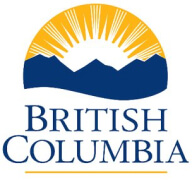At PWT, caring for the environment is a cornerstone of our approach, with reduction of carbon emissions as one of our key goals. Trenchless technologies, in general, offer reductions in carbon emissions of about 75% when compared to traditional open cut. To that end, we have been instrumental in setting up a scientific method for cities to gain carbon offsets/credits from their use of trenchless methodologies.
The City of New Westminster was the first city world wide to gain a carbon offset in June 2016 for their trenchless program. — They used our calculator.
Our carbon calculator has been reviewed and approved by the Province of BC. as of December 2018. We expect to see it in common use across BC in 2019.
We are proud to present a Green Communities Carbon Neutral Framework for Trenchless Technology Capital Projects, including a sample of screenshots taken from our Carbon Calculator.
Download the complete , and . Learn more about Trenchless Technology through the BC Climate Action Toolkit website.
This project profile provides guidance on estimating the amount of greenhouse gas (GHG) emissions that can be reduced by using a “trenchless technology” to upgrade, repair, replace or construct any underground utility, instead of using conventional open-cut trenching.
In contrast to traditional trenching, which involves digging a trench, hauling extracted material to a disposal site and replacing with new material, trenchless technologies involve drawing a new pipe (or pipe lining) along the path of an existing pipe or boring for new constructions. In turn, it requires removal of less material than conventional trenching, with consequent reductions in diesel fuel consumption and related GHG emissions. GHG emissions can be reduced by between 40% – 90% by using trenchless technologies instead of conventional trenching. These reductions are dependent on the location of the project and the sites to/from which material is hauled, the type of soil that the utility pipe is in, the number of lateral connections to the pipe and the type of trenchless technology used.
Trenchless technology projects evaluated under this profile will achieve net GHG reduction through a reduction in material excavated and transported, as quantified using the accompanying calculator. This profile will determine the net GHG emissions reduced in tonnes of Carbon Dioxide equivalents (tCO2e).
Most cities in Canada now use trenchless methods for a small part (less than 5%) of their utility construction or re-habilitation program, and eligible projects are expected to reduce carbon emissions compared to the business as usual scenario (cut and cover).
The Excel-based calculator associated with this project profile provides an accounting approach to measuring emissions reductions in the year that they would have occurred. First, the tool calculates the total excavation volumes for open-cut and trenchless scenarios using the dimensions provided by the user, and then calculates fuel use from hauling material to the dumpsite.
The calculator requires inputs for soil type, ground conditions, pipe diameter, pipe length and number of lateral connections. The user may choose to provide inputs for the following parameters (or can allow the tool to use default values): pipe laying depth at start and end, percentage of excavated material reused, dump truck capacity, distance of project site to dump site, number of manholes, number of entry pits, exit pits, and runs, and dimensions of manholes, lateral connections, and entry/exit pits, and open cut trench upper and lower width and productivity (in meters per 8 hour day). If project specific information is available to the user, the tool also allows the user to customize the default inputs of productivity values (in meter per hour progress for each trenchless technology) and also for the power ratings of the machinery used for the project.
Machinery fuel use (and emissions) is calculated by using established engineering productivity data for the project soil type and ground conditions to determine the running time for the equipment used in open cut and the excavation portion of trenchless projects. The tool uses productivity data for the trenchless technology to determine the running time for the trenchless equipment.
The list of equipment for each technology was developed using established references, expert interviews and vetted through an informal peer review process and testing against real project data. Fuel use is calculated by multiplying the running time by the operational horse power (load factor taken into account) by the EPA BSFC kg Fuel/hp-hr. Emissions are obtained by multiplying fuel use by the appropriate emission factor from BC’s 2016/17 Best practices methodology for quantifying greenhouse gas emissions.
The following example illustrates the steps needed to estimate the Net Emission Reductions associated with using trenchless technology instead of the conventional open-cut trenching approach. This is a hypothetical example meant to illustrate the potential GHG savings from a fictitious project.
In 2015, a municipality determines that an old water main needs to be replaced that runs underneath a busy urban road. The options available are to undertake open-cut trenching or to use a trenchless technology. After an evaluation of the different options available, the City’s municipal engineer responsible for the project decides that trenchless pipe bursting will be the best approach to take, in part because of the reduced environmental impact of the approach.
| Soil Type | Medium |
| Ground Conditions | Wet |
| Surface Type | Asphalt |
| Pipe Diamater | 375 mm |
| Length | 200 m |
| Pipe Depth at Start | 2.5 m |
| Pipe Depth at End | 2.5 m |
| Percent of excavated soil reused | 0% (Default) |
| Soil/gravel/sand truck capacity | 7.5 m3 (Default) |
| Total Number of Manholes | 2 |
| Length | 2.1 m (Default) |
| Width | 2.1 m (Default) |
| Depth | 2.5 m (Default) |
| Trench Upper Width | 1.4 m (Default) |
| Trench Lower Width | 0.9m (Default) |



The results of this project were reductions of 38.9tonnes of CO2e, which represents 87% less than would have occurred had an open cut approach been used. This is equivalent to 13,490 Litres of diesel not burned and 109 fewer return truck trips. See Figure 1 for an illustration of net project impacts in terms of diesel fuel savings, reduced number of truck trips and emissions reductions.
The checklist below summarizes the seven Project Eligibility Requirements under the GCC Carbon Neutral Framework (for additional details see Becoming Carbon Neutral: A Guidebook for Local Governments in British Columbia, Appendix 1, GCC Project Eligibility Requirements).
In addition to meeting these seven eligibility requirements, local governments implementing a Trenchless Technology project must meet additional ‘Trenchless Technology specific’ eligibility requirements as outlined below.
Activities related to maintenance of traditional services are included as “in scope” for purposes of corporate reporting under the GCC Carbon Neutral Framework. Maintenance is part of the annual expenses associated with the service or assets and necessary to maintain the integrity of the service or asset. Work paid for from general maintenance will not be eligible under this project profile.
Only work that is outside of the local government’s corporate carbon inventory as per the GCC Carbon Neutral Framework (ie: capital projects) is eligible under the project profile. Capital or construction work is an infrequent, usually costly, activity that provides benefit for several years. Public Sector Accounting Board (PSAB) 3150 refers to Tangible Capital Assets (TCAs) and the construction or betterment of these TCAs are often capitalized over a longer period of time. Please refer to page 17 of the Workbook for more information.
A number of local governments are already using trenchless technologies in B.C. In January 2015, a pilot project was initiated with the City of New Westminster in which the municipality provided several years of records of their trenchless projects to use as case studies. Using the excel based calculator, the GHG emissions reductions from the City’s 2010-2014 Trenchless projects were calculated to provide support for the third part validation and verification of credits. The results of the calculations showed that the use of trenchless pipe bursting and cured in place lined technologies instead of open-cut methods resulted in a reduction of 358.4 tonnes of CO2e, 124,000 less litres of diesel burnt, and an estimated 3280 fewer truck trips on city roads.
There are also precedents for calculating GHG reductions for this project type. These precedents have informed this project profile and have been a valuable reference in ensuring that the present calculator produces a conservative estimate of emission reductions. The following calculators were identified and reviewed:
Ariaratnam, Samuel T. and Sihabuddin, Shaik S., 2009. “Comparison of Emitted Emissions Between Trenchless Pipe Replacement and Open Cut Utility Construction”. Journal of Green Buildings, Volume 4, Number 2. Available at: http://www.journalofgreenbuilding.com/doi/abs/10.3992/jgb.4.2.126
Knight, M., Younis, R., Zhou, H., and Nowak, T., 2014. “2013 Municipal Buried Infrastructure Survey: An overview of Canada’s water, wastewater and storm water sectors”. Centre for Advancement of Trenchless Technologies, University of Waterloo, May 2014. Available at: http://cattevents.ca/pdf/2013_CATT_Municipal_Survey.pdf
Pallant, J., 2011. “GHG Protocol: Trenchless Construction Protocol: Fuel Efficiency and Reduced Asphalt Production”. Draft Protocol prepared by Habitat Carbon Assets.
Rehan, R., and Knight, M., 2007. “Do Trenchless Pipeline Construction Methods Reduce Greenhouse Gas Emissions?”. Centre for Advancement of Trenchless Technologies, University of Waterloo.
For more information about the importance of carbon reduction, click here to connect with the Climate Change Website. https://www2.gov.bc.ca/gov/content/environment/climate-change
An alternate tendering process where the contract is awarded to one entity which comprises both engineering and contracting.
Because PW Trenchless Construction offers such innovative solutions for underground utilities, it is often beneficial for the owner to request solutions based on a performance specification. This allows PW Trenchess to offer unique solutions while working with equally innovative engineering companies. Learn more about design - build here!
More InfoNew installation methodologies include HDD & traditional open cut Learn more about new installation here!
More InfoIn this day & age of pipe systems reaching the end of their projected lifespan, pipe replacement and pipe rehabilitation have become major fields of engineering.
PW Trenchless Construction provides viable options such as pipe bursting, loose fit lining and internal pipe re-construction whether partial & fully circumferential. Learn more about pipe replacement & rehabilitation here!
More InfoThe aging culverts under roads and highways in many case have reached the end of their engineered life-span. We consider the rehabilitation or replacement of these culverts to be vital to our built environment.
PW Trenchless has been a pioneer in working with MOTH, railway companies and municipalities in developing rehabilitation methodologies for the hundreds of thousands of culverts that currently exist in BC. We have offered solutions in both procurement and construction from design-build to sliplining, invert rehabilitation and full circumferential relining. Learn more about culvert rehabilitation here!
More InfoOften pipe failure can be concentrated to one section, for various reason, leaving the rest of the pipe in good condition. The repair of these localized failures are know as external point repairs (EPR's).
EPR's demonstrate PW's ability to work as both a trenchless and civil contractor, completing EPR contracts using our civil contracting skills and assisting other pure trenchless contractors who only have the capacity to work in an existing pipe. Learn more about point repairs here!
More InfoPipe upsizing is the fundamental concept of pipe bursting.
The vast majority of pipes are less than or equal to 200mm in diameter, but with today's densification practices of urban design, there is a major demand to increase current capacity to handle extra flow. Pipe bursting provides the ideal solution to this issue, particularly in an urban setting. Learn more about pipe upsizing here!
More InfoHorizontal Directional Drilling is a low impact Trenchless construction service where pipe is installed in a shallow arc along a bore path which has been created by a drilling rig. Often the terms Horizontal Directional Drilling (HDD) and Directional Boring are used interchangeably, but in our industry we use the word “boring” when we utilize smaller sized drilling rigs with small diameters for short crossings in the hundreds of feet, and we use the word “drilling” when we utilize larger rigs with large diameters for long crossings in the thousands of feet. Learn more about horizontal directional drilling here!
More InfoPrimus Line® is a flexible sliplining solution for the trenchless rehabilitation of pressure pipes. The system consists of a flexible Kevlar® reinforced liner and specially developed end fittings. Primus Line® is not bonded to the host pipe and is self-supporting. An annulus remains between Primus Line® and the host pipe.
Developed by experienced engineers, the system is suitable for different media as well as various application needs and has already proven itself in numerous projects.Learn more about primus lining here!
More Info





























When you join PWT, you become part of a community of people who are engaged in the most innovative practices in the Trenchless Industry. We have been instrumental in setting up a scientific method for cities to gain carbon offsets/credits from their use of trenchless construction. This system has been reviewed by the BC Government and has been approved as of December 2018. We expect to see it in common use shortly.
Subscribe to our newsletter for cutting-edge industry updates, expert knowledge, and exclusive content.